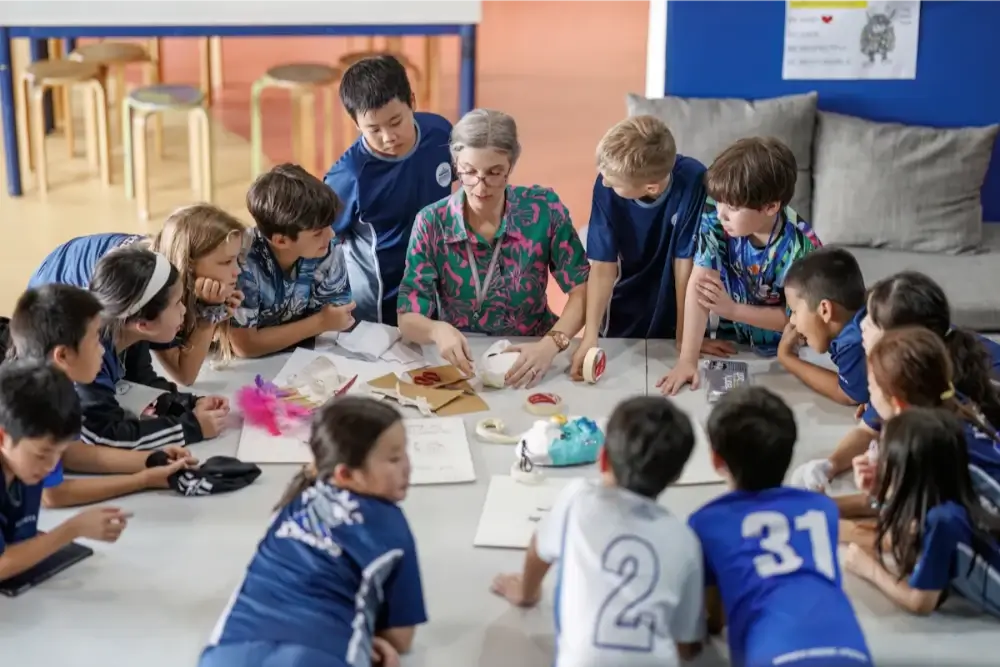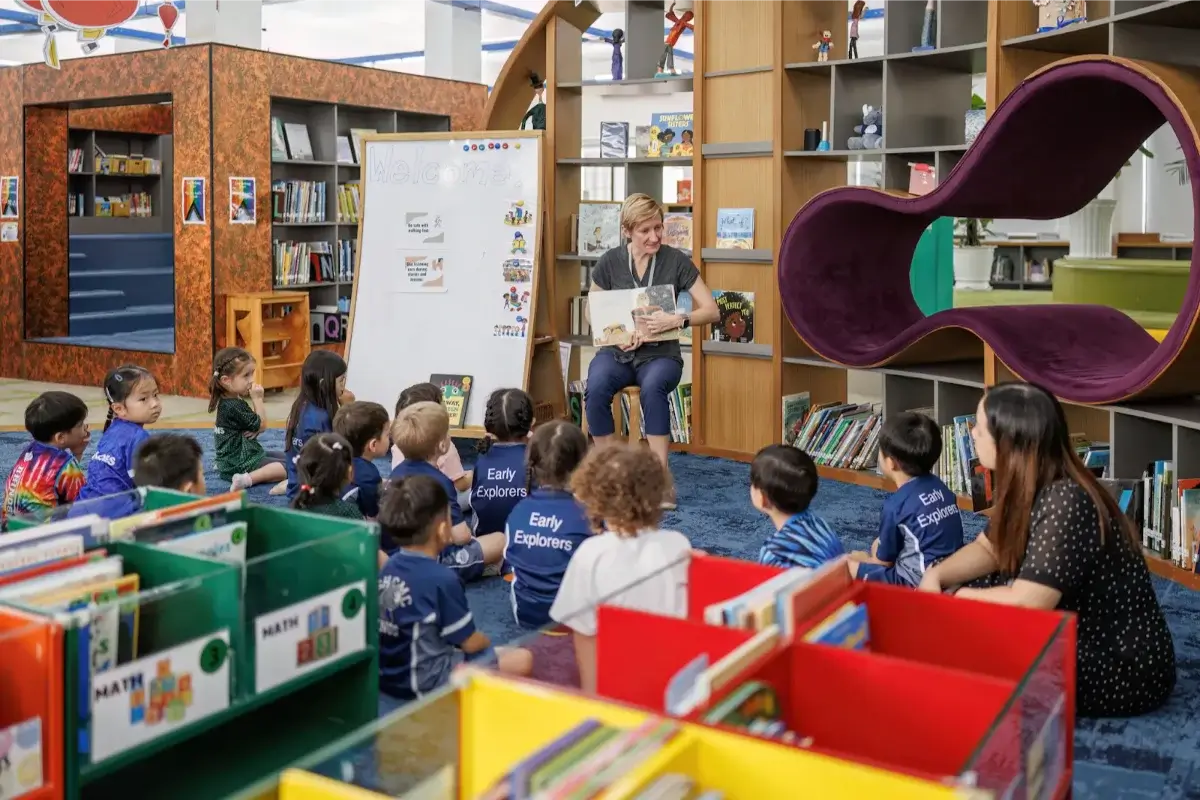How the Open Classroom Concept Helps Students Learn Better
The open classroom concept creates a learning space that reflects how students think, interact, and grow. Instead of fixed seating and rigid instruction, it gives students room to move, collaborate, and engage with ideas in natural and relevant ways.
This learning approach supports deeper understanding by encouraging students to ask questions, explore real world problems, and take responsibility for their progress. It allows educators to personalise instruction and build stronger relationships with students through small group work, hands-on projects, and inquiry led learning.
At the International School Ho Chi Minh City (ISHCMC), this concept shapes how students experience learning every day. Open classrooms support the school’s commitment to curiosity, independence, and real world thinking. These values shape its approach across all programs.
Understanding Open Learning Environments
An open learning environment refers to a classroom designed to increase interaction, flexibility, and independence. Instead of desks in rows and one teacher leading from the front, open classrooms use shared spaces, modular furniture, and group-oriented layouts. This design reflects how students naturally learn by engaging in communication, movement, and exploration.
This environment gives teachers the space to adjust their approach based on how students respond. They can group students for discussion, create quiet zones for focused work, or move between groups to facilitate ongoing inquiry. More than a layout, the open classroom concept is a mindset – one that values the student’s role in leading their own learning process.
In these settings, learning feels more dynamic. Children become active participants, learning to work with others, manage their time, and solve problems confidently.
How Open Classrooms Transform Students’ Learning
Open classrooms change how students experience education. Instead of learning through instruction alone, students learn through interaction, exploration, and meaningful experiences that connect learning with real life.

Encourage Collaboration and Peer Learning
Open classrooms naturally encourage students to work together. Shared spaces make it easier for them to engage in group projects, offer feedback, and develop ideas as a team. These environments help students build strong communication skills, understand different perspectives, and work through challenges respectfully.
By collaborating early and often, students gain confidence in their ability to contribute, listen, and lead. These are essential skills that extend beyond the classroom into universities and future careers.
Strengthen Independence and Ownership
With more choice in how they learn, students become more self directed. They learn to plan their time, approach problems creatively, and track their own progress. This independence strengthens their resilience and builds motivation from within.
Instead of relying on instructions, students learn to ask the right questions and reflect on their learning. This leads to a deeper understanding and a stronger sense of purpose in their education.
Support a Range of Learning Styles
Every student learns differently. Open classrooms make it easier for teachers to adapt their instruction to suit those differences. Students can work through visual projects, explore hands-on topics, or join smaller groups for support. This approach ensures that each learner engages with content in a way that aligns with their individual needs and understanding.
It also supports neurodiverse students and those who benefit from movement, sensory choice, or a nontraditional learning pace. The flexibility creates space for every child to feel successful and seen.
Promote Active Engagement Through Movement
In open classrooms, students are not confined to a desk. They move between learning zones, use different resources, and work in varied formats throughout the day. This change in environment keeps students alert and engaged, helping them stay focused and involved in their tasks.
Movement supports cognitive development, emotional regulation, and memory retention. It also mirrors how students will work in the future – through dynamic, interactive spaces rather than fixed routines.
Create a Sense of Belonging and Wellbeing
Open classrooms invite connection. The shared environment encourages positive interactions, builds relationships, and creates a sense of community. Students feel safe, included, and valued in their space, directly influencing their willingness to participate and grow.
This sense of belonging contributes to emotional well-being and helps reduce school related stress. It fosters a culture where students feel genuinely supported in their academic growth and personal development.
How International School Ho Chi Minh City Promotes Open Learning Environments in the Classroom
At the International School Ho Chi Minh City (ISHCMC), open learning environments reflect a clear vision: students learn best when they are engaged, curious, and empowered to take ownership of their progress. The school’s classroom design and instructional practices are aligned with this belief, supporting deeper inquiry, collaboration, and flexibility across all stages of learning.

Each space on campus is intentionally built to support independence and engagement. From the Primary Years Programme (PYP) to the Diploma Programme (DP), ISHCMC ensures students learn in environments that nurture confidence, adaptability, and a strong sense of agency.
Key elements of ISHCMC’s open classroom approach include:
- Collaborative Layouts: Classrooms are designed with open zones and movable furniture to promote discussion, teamwork, and cross age group collaboration.
- Inquiry Driven Teaching: Educators take on the role of facilitators, guiding students through explorations that connect classroom learning to real world experiences.
- Flexible Movement: Students move purposely throughout the day, rotating between group activities, independent stations, and reflective work areas.
- Real World Projects: Learning tasks are rooted in authentic, meaningful problems, encouraging students to think critically, ask questions, and apply knowledge practically.
- Integrated Technology: Digital tools are embedded across learning environments to enhance creativity, build media literacy, and support personalized instruction.
- Adaptable Seating and Layouts: Each classroom adapts to meet students’ developmental needs, offering quiet zones, group areas, and varied seating options that support different learning styles and preferences.
This approach is deliberate. It reflects ISHCMC’s belief that learning environments should inspire students to take initiative, express their ideas, and challenge themselves to grow. By designing spaces that respond to how students learn, ISHCMC prepares learners to thrive in a world that values critical thinking, collaboration, and creative problem solving.
Where Open Classrooms Come to Life at ISHCMC
When students learn in environments that reflect the real world, such as open, adaptable, and collaborative spaces, they develop skills that stay with them for life. Open classrooms support learning that shapes confident communicators, creative problem solvers, and strong collaborators.
ISHCMC’s model makes this possible every day. Across its campuses, students explore ideas purposefully and develop a mindset rooted in curiosity and growth. These experiences prepare them for a world that rewards initiative and flexibility, where education is less about memorizing and more about meaning.
Apply today to secure a spot for your child at ISHCMC, where open minds grow through open classrooms.







